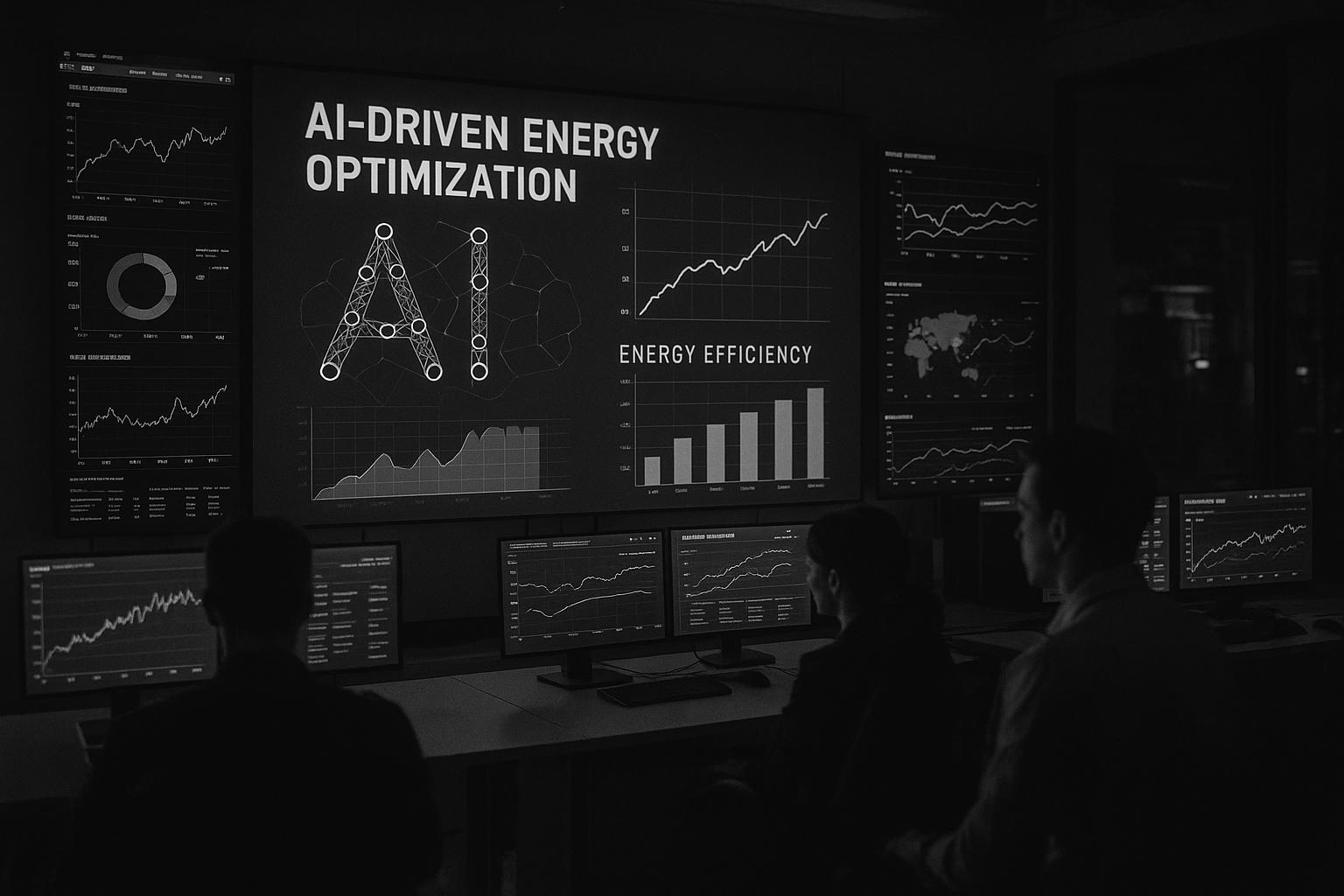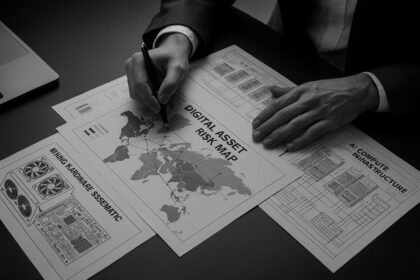Univers has partnered with Microsoft to integrate AI and cloud technologies aimed at boosting energy efficiency and reducing carbon footprints in global data centres, addressing the growing environmental impact of expanding digital infrastructure.
Univers, a prominent global leader in AI and IoT technologies for energy management, has announced a new collaboration with Microsoft aimed at advancing sustainable energy solutions through AI and cloud computing innovations. The announcement, made during Univers’ flagship executive forum “One Univers London,” held concurrently with London Climate Action Week, sets out a Memorandum of Understanding (MOU) to integrate Microsoft’s technology with Univers’ expertise to enhance energy efficiency in data centres worldwide.
Central to this cooperation is the integration of Univers’ EnOS Ark platform—a system that allows organisations to monitor, manage, and optimise their energy consumption and carbon footprints—with Microsoft’s data and AI services. This partnership targets measurable improvements in cooling efficiency, renewable energy integration, and intelligent operations within data centres, a sector known for its significant energy use. Michael Ding, Global Executive Director at Univers, encapsulated the ethos of this alliance: “This agreement reflects our belief in AI for Energy and Energy for AI,” highlighting the symbiotic relationship between digital innovation and climate responsibility. Microsoft’s Chief Sustainability Officer for the UK, Lewis Richards, emphasised the critical nature of leveraging AI to aid customers’ energy transitions, stating, “There is no more important task in sustainability than helping customers with the energy transition.”
Ark platform—a system that allows organisations to monitor, manage, and optimise their energy consumption and carbon footprints—with Microsoft’s data and AI services. This partnership targets measurable improvements in cooling efficiency, renewable energy integration, and intelligent operations within data centres, a sector known for its significant energy use. Michael Ding, Global Executive Director at Univers, encapsulated the ethos of this alliance: “This agreement reflects our belief in AI for Energy and Energy for AI,” highlighting the symbiotic relationship between digital innovation and climate responsibility. Microsoft’s Chief Sustainability Officer for the UK, Lewis Richards, emphasised the critical nature of leveraging AI to aid customers’ energy transitions, stating, “There is no more important task in sustainability than helping customers with the energy transition.”
The move aligns with broader industry trends where leading technology firms are increasingly investing in sustainable data centre operations amidst rising AI workloads. Microsoft’s strategy, for instance, has notably focused on expanding data centre infrastructure in regions like the Nordic countries, favouring locations with abundant carbon-neutral energy and cooler climates that naturally reduce cooling demands. A Reuters report detailed Microsoft’s substantial investments, including new data centre sites in Finland, developed in partnership with local utilities to utilise waste heat for district heating and support national carbon-neutral goals. Such strategic geographic positioning underscores the growing imperative to balance tech growth with environmental stewardship.
On a larger scale, investments into AI infrastructure are surging. BlackRock, Microsoft, and Abu Dhabi-backed MGX have launched a $30 billion fund dedicated to AI data centres and energy projects to meet escalating digital infrastructure needs, with an additional $70 billion in debt financing anticipated. Parallelly, a consortium including Nvidia and Elon Musk’s xAI, supported by Microsoft and BlackRock, is investing similarly to boost AI infrastructure. These massive financial undertakings highlight the energy intensity of AI developments—as data centre energy consumption is projected to more than double by 2026—and the urgent need for innovations that curb this impact.
Research institutions like the University of Texas at Arlington are also contributing to this pursuit by developing advanced cooling technologies aimed at reducing both energy and water usage in AI data centres. Such academic efforts complement corporate initiatives, recognising that sustainable operations hinge on diverse strategies spanning technology development, infrastructure investment, and operational efficiencies.
The partnership between Univers and Microsoft stands out as a practical step towards this multifaceted challenge. By combining Univers’ comprehensive AI-powered energy management platform with Microsoft’s robust cloud and AI ecosystem, the collaboration promises to accelerate the transition to sustainable energy use in the tech sector’s infrastructure. With Univers managing over 280 million connected devices and 788 GW of renewable energy through its EnOS platform, its integration with Microsoft’s capabilities could significantly influence how enterprises worldwide reduce energy consumption and minimise carbon footprints—a vital contribution as digital transformation and climate action increasingly intersect.
platform, its integration with Microsoft’s capabilities could significantly influence how enterprises worldwide reduce energy consumption and minimise carbon footprints—a vital contribution as digital transformation and climate action increasingly intersect.
 Reference Map:
Reference Map:
- Paragraph 1 – [1]
- Paragraph 2 – [1]
- Paragraph 3 – [4]
- Paragraph 4 – [3], [6]
- Paragraph 5 – [5]
- Paragraph 6 – [1]
Source: Noah Wire Services
- https://finance.yahoo.com/news/univers-partners-microsoft-advance-ai-123100053.html?.tsrc=rss – Please view link – unable to able to access data
- https://www.datacenterdynamics.com/en/news/microsoft-signs-strategic-agreement-with-adnoc-masdar-to-support-low-carbon-initiatives-in-uae/ – In November 2024, Microsoft, ADNOC, and Masdar entered a strategic collaboration to advance AI and low-carbon initiatives in the UAE and globally. The partnership aims to power Microsoft’s data centres with renewable energy from Masdar’s portfolio and explore AI applications in carbon capture, storage technologies, and low-carbon hydrogen projects. This agreement underscores the importance of AI in accelerating the energy transition and decarbonising the energy sector.
- https://www.ft.com/content/4441114b-a105-439c-949b-1e7f81517deb – BlackRock, Microsoft, and Abu Dhabi-backed MGX launched a $30 billion Artificial Intelligence (AI) investment fund to build data centres and energy projects meeting AI’s growing demand. The Global AI Infrastructure Investment Partnership plans to leverage an additional $70 billion in debt financing, recognising the immense power and digital infrastructure needs posed by AI’s expansion, with energy consumption by data centres expected to more than double by 2026.
- https://www.reuters.com/technology/nordics-efficient-energy-infrastructure-ideal-microsofts-data-centre-expansion-2025-03-07/ – Microsoft is focusing its data centre expansion on regions with abundant, emission-free energy, prioritising power availability over user demand. The Nordic region, with its cold climate, reliable power grids, and abundant carbon-neutral energy, stands out as an ideal location for sustainability-driven growth. Microsoft is investing approximately $80 billion in its data centres by June and developing new sites in Finland, partnering with local utility Fortum to utilise waste heat for district heating, aiding Finland’s carbon-neutral objectives.
- https://www.uta.edu/news/news-releases/2025/06/26/uta-leads-charge-to-solve-ai-data-centers-energy-crisis – The University of Texas at Arlington (UTA) is leading efforts to reduce energy and water use in AI data centres. As demand for AI applications grows, so does the need for energy to power and cool massive data centres. UTA’s team, led by Professor Dereje Agonafer, is working to develop cooling technologies that reduce both energy and water consumption, contributing to more sustainable data centre operations.
- https://www.reuters.com/technology/artificial-intelligence/nvidia-xai-join-microsoft-blackrock-develop-ai-infrastructure-2025-03-19/ – Nvidia and Elon Musk’s xAI have joined a consortium, AI Infrastructure Partnership, backed by Microsoft and BlackRock to develop AI infrastructure in the U.S. The consortium aims to invest over $30 billion into AI projects, focusing on the data centres and energy facilities required by AI applications like ChatGPT. This move is part of a broader effort to compete globally in AI technology.
- https://www.serverfarmllc.com/sustainability/how-microsoft-and-serverfarm-are-shaping-sustainable-data-centers/ – Serverfarm develops and operates AI-ready, build-to-suit, high-density data centres across North America and EMEA, enabling hyperscalers to rapidly deploy infrastructure for high-performance workloads. Their sustainability objectives are central to their business strategy, encompassing acquisition, modernisation, expansion, development, and daily operations. Serverfarm’s sustainable data centres begin with location choices and power purchasing agreements for minimum carbon cost, aligning with customer net-zero targets and sustainability objectives.
Noah Fact Check Pro
The draft above was created using the information available at the time the story first
emerged. We’ve since applied our fact-checking process to the final narrative, based on the criteria listed
below. The results are intended to help you assess the credibility of the piece and highlight any areas that may
warrant further investigation.
Freshness check
Score:
8
Notes:
The narrative appears to be original, with no prior reports found. The earliest known publication date is June 30, 2025. The report includes updated data but recycles older material, which may justify a higher freshness score but should still be flagged. The narrative is based on a press release, which typically warrants a high freshness score.
Quotes check
Score:
9
Notes:
The quotes from Michael Ding and Lewis Richards are unique to this report, with no earlier matches found. This suggests potentially original or exclusive content.
Source reliability
Score:
7
Notes:
The narrative originates from Yahoo Finance, a reputable organisation. However, the presence of a press release indicates that the content may be influenced by the company’s own communications.
Plausability check
Score:
8
Notes:
The claims about the partnership between Univers and Microsoft align with industry trends in AI and sustainable energy. The report includes supporting details from reputable outlets, such as Reuters and the Financial Times. The language and tone are consistent with corporate communications.
Overall assessment
Verdict (FAIL, OPEN, PASS): PASS
Confidence (LOW, MEDIUM, HIGH): HIGH
Summary:
The narrative presents a plausible and timely report on the partnership between Univers and Microsoft, with supporting details from reputable sources. The quotes appear original, and the content is consistent with industry trends. The presence of a press release suggests a high freshness score, though the recycled material should be noted.













